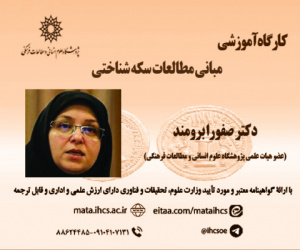بررسی عوامل موثر بر نقش آفرینی بناهای تاریخی در گردشگری شهری با رویکرد آینده پژوهی
آرشیو
چکیده
زمینه و هدف: اماکن تاریخی از مهم ترین فضاهای شهری محسوب می شوند که می توانند در تقویت گردشگری شهری نقش مهمی را ایفا نمایند. بنابراین هدف از پژوهش حاضر بررسی عوامل موثر بر نقش آفرینی ابنای تاریخی در گردشگری شهری می باشد. روش بررسی: برای جمع آوری داده ها از منابع کتابخانه ای به جهت نگارش مقدمه و مصاحبه نیمه ساختاریافته در دو مرحله برای دستیابی به شاخص های تحقیق بهره گرفته شد. در مصاحبه اول از متخصصین معرفی بازیگران اصلی و اهداف مهم مرتبط با هدف تحقیق درخواست گردید و در مرحله بعدی پس از تشکیل ماتریس بازیگر-بازیگر و ماتریس بازیگر-هدف آن ها را در اختیار متخصصین قرار داده و درخواست شد طبق راهنما ماتریس های مذکور را تکمیل نمایند. بعد از جمع آوری داده های مرتبط با بازیگران و اهداف تاثیرگذار بر هدف تحقیق، ماتریس های بازیگر-بازیگر و بازیگر-هدف تشکیل شده و سپس در قالب ورد در اختیار متخصصین قرار داده شد و از آن ها درخواست گردید ابندا تاثیرات بازیگران بر روی یکدیگر را با شماره های 0،1،2،3،4 مشخص نمایند که در آن عدد 0 عدم تاثیر و عدد 4 بیشترین تاثیرگذاری را دارد و سپس میزان موافقت و مخالفت بازیگران با اهداف را از طریق شماره های 0،1،2،3،4، 1-،2-،3-،4- آشکار سازند که در آن عدد 0 بدون نظر، عدد4 بیشترین موافقت و عدد 4- بیشترین مخالفت را نشان می دهد. بعد از وارد کردن نظرات متخصصین در نرم افزار مکتور تحلیل های مرتبط با موضوعات مورد نظر همچون تاثیرگذارترین و تاثیرپذیرترین بازیگران و سایر موارد مورد نیاز انجام گرفت و نتایج به دست آمده در پژوهش حاضر مورد استفاده گردید. یافته ها و نتیجه گیری: نتایج نشان داد که اداره میراث فرهنگی و گردشگری و شوراهای اسلامی شهر تاثیرگذارترین و رقابت پذیرترین بازیگران و کارشناسان گردشگری و شرکت های گردشگری و خدمات مسافری تاثیرپذیرترین بازیگران شناخته شدند. همچنین نصب بنرهای تبلیغاتی ابنای تاریخی در سطح شهر مهم ترین هدف از جانب بازیگران معرفی گردیدند. به طور کلی میتوان بیان کرد که تصمیمات گرفته شده در اداره میراث فرهنگی و گردشگری، شوراهای اسلامی شهر و شهرداری ها بیشترین تاثیر را بر فرآیند برنامه ریزی جهت نقش آفرینی بهتر ابنا و اماکن تاریخی در گردشگری شهری و همچنین عملکرد سایر بازیگران مرتبط با فرآیند مذکور دارد.Investigating factors affecting the role of historical buildings in urban tourism with a future research approach
Background and Objective: Historical sites and buildings are considered to be among the most important urban spaces that can play a significant role in sustainable urban development. Accordingly, the purpose of this study is to investigate the factors affecting the role of historical buildings in urban tourism. Methodology: To collect data, library resources were used to write an introduction and semi-structured interviews were conducted in two stages to achieve research indicators. In the first interview, the experts were asked to introduce the main actors and important goals related to the research objective. In the next stage, after forming the actor-actor matrix and the actor-goal matrix, they were provided to the experts and they were asked to complete the aforementioned matrices according to the guidelines. After collecting data related to the actors and targets affecting the research objective, actor-actor and actor-target matrices were formed and then provided to the experts in Word format. They were asked to indicate the actors' effects on each other with the numbers 0, 1, 2, 3, and 4, where 0 indicates no effect and 4 indicates the most effect. Then, they were asked to indicate the actors' level of agreement and disagreement with the goals through the numbers 0, 1, 2, 3, 4, -1, -2, -3, and -4, where 0 indicates no opinion, 4 indicates the most agreement, and -4 indicates the most disagreement. After entering the experts' opinions into the MACTOR software, analyses related to the desired topics, such as the most influential actors and other required items, were conducted, and the results obtained were used in the present study. Findings and Conclusion: The results showed that the Cultural Heritage and Tourism Department and the Islamic City Councils were recognized as the most influential and competitive tourism actors and experts, and tourism and travel service companies were recognized as the most impressive actors. Also, installing advertising banners on historical buildings throughout the city was identified as the most important goal by the actors. In general, it can be stated that decisions made in the Department of Cultural Heritage and Tourism, Islamic City Councils, and municipalities have the greatest impact on the planning process for a better role for historical monuments and sites in urban tourism, as well as the performance of other actors related to the aforementioned process. Therefore, the three mentioned bodies must put specialized decisions on their agenda that are in line with the conditions of the region in question, so that these decisions serve as a bridge of communication and a guide for other actors in carrying out their roles. Also, history experts, archaeologists, urban planners, urban tourism experts, and tourism and travel service companies, as other players in the planning process, must strengthen their connections and make consistent decisions so that these decisions complement each other and prevent obstacles and problems from occurring.







